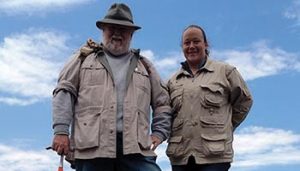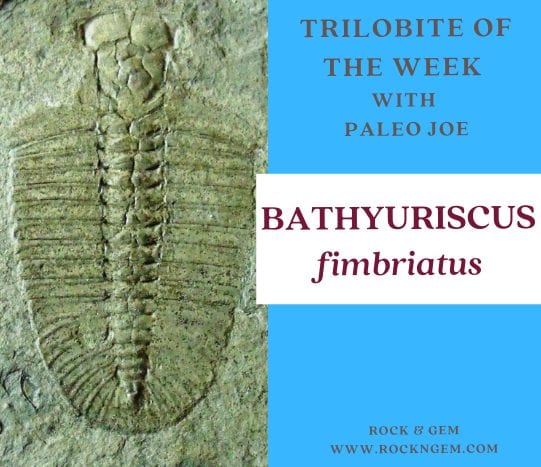By Joseph “PaleoJoe” Kchodl
This Cambrian trilobite is found in the Wheeler formation of Delta County, Utah. Interestingly, it is quite uncommon to find this trilobite with free cheeks attached. Most examples appear as discarded molt because, with a hard exoskeleton, this trilobite species tended to molt to grow.
The BATHYURISCUS fimbriatus would split at the free cheeks and swim away to grow and harden its new exoskeleton. The cephalon, when found complete, is expanded forward and roughly semi-circular. It ends in small genal spines, which are the only spines on this species. The central or axial lobe is quite thin, and generally, this trilobite has nine body segments with a pygidium or tail that is fairly wide and flat.
This Cambrian trilobite often measures greater than two inches.
DID YOU KNOW: Trilobites, an extinct form of arthropod related to insects, crabs, crayfish, and horseshoe crabs, are among the most prevalent invertebrates with hard body parts to appear during the Cambrian Period. These creatures are called trilobite due to the three distinct “lobes” running vertically through the body section.

About the columnist: Joseph “PaleoJoe” Kchodl is a paleontologist, educator, veteran, author, fossil dig organizer/guide, business owner, husband, father, and grandfather, and fossil fanatic. For decades, he’s spent hours in classrooms around the Midwestern United States and beyond, speaking to school children about fossils and fossil hunting. Visit his site to purchase fossils, contact PaleoJoe, visit www.paleojoe.com.
Plus, learn more about PaleoJoe and his daughter PaleoJen and their paleontology exploration partnership in an the article “Fueling a Passion for Paleontology“.

